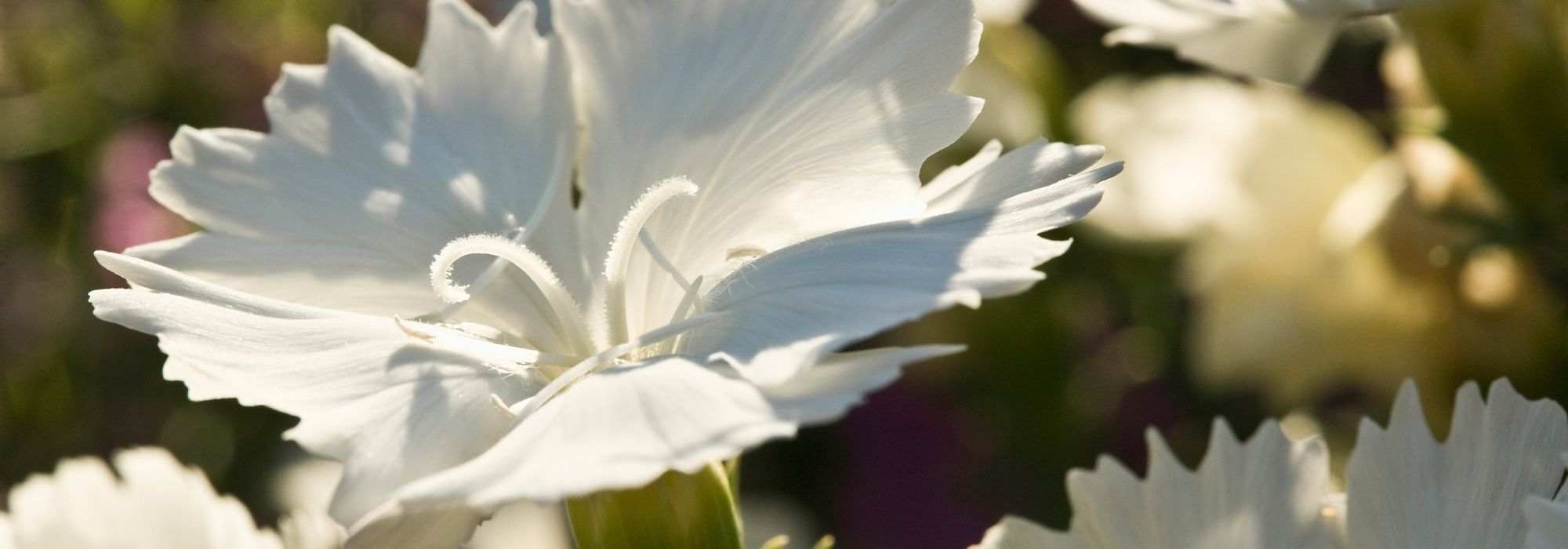
Growing a carnation in a pot
To flower your outdoor space!
Contents
Whether annual, biennial, or perennial, Carnation is perfectly suited for pot cultivation. Alongside other flowering pots, Dianthus (its Latin name) enhances sunny terraces or balconies. The shape and colour of the flowers vary according to the species and varieties: single flower to double, more or less dentate, solid or variegated, white, yellow, pink, red, or purple. To enjoy its generous and fragrant flowering, discover all our tips on where, when, and how to plant the Carnation in a pot!
What type of pot to choose?
Carnations are often grown in pots or containers. When solitary in a round pot, the diameter should be around 20 to 40 cm depending on the species and variety. To create a beautiful floral composition with different plants in a container, allow for a depth of 30 cm for a length of 80 cm. Spreading species and varieties should be reserved for large troughs and containers. Terracotta pots are preferred, as they are more breathable than plastic pots. To prevent root rot, the bottom of the container must be drilled to allow excess water to drain away.
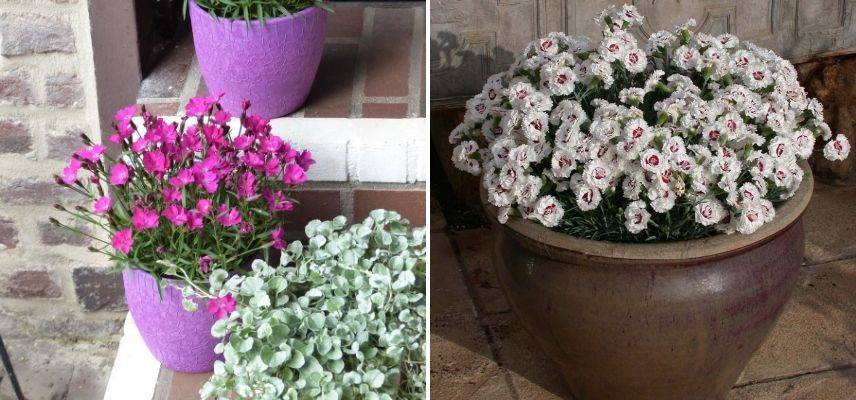
Carnations grown in pots
Read also
Carnation: planting, care, sowing tipsWhat compost for potted carnation?
To bloom well, a Dianthus needs a well-drained, medium-rich, neutral or slightly calcareous substrate. It is sensitive to waterlogged soils that can be fatal by suffocating it or causing fungal diseases. A drainage layer at the bottom of the container is therefore necessary. Prepare a permeable and gritty mix composed of garden soil, potting compost (or compost) and coarse river sand.
Discover other Dianthus - Pinks
View all →Available in 0 sizes
Available in 2 sizes
Available in 2 sizes
Available in 2 sizes
Available in 1 sizes
Available in 2 sizes
Available in 2 sizes
Available in 1 sizes
Available in 2 sizes
Available in 1 sizes
Which variety to choose?
- Some Carnations are creeping and need space to spread. The Pentecost Carnations Dianthus gratianopolitanus ‘Kahori’, ‘Whatfield Gem’, ‘Bombardier’ and the Deltoid Carnations like ‘Brilliant’ and ‘Albiflorus’ find their place in a large container or trough.
- A large majority of Sweet William (Dianthus plumarius) of medium height with an upright habit are perfect candidates for pot cultivation. Notable examples include Dianthus allwoodii ‘Alice’, Dianthus plumarius ‘Ine’, ‘Scent First Iced Gem’, ‘Heidi’ or ‘David’, measuring between 20 and 30 centimetres in all directions.
- The tallest, reaching up to 40 to 50 cm, should be grown solitary, such as the Superb Carnations (Dianthus superbus ‘Primadonna’) and Poet’s Carnations (Dianthus barbatus ‘Sooty’, ‘Jolt Pink Magic’, ‘Pink Beauty’ and ‘Oeschberg’). Sweet Williams generally do not exceed 30 cm in height, yet there are some larger varieties: Dianthus plumarius ‘Lady in Red’, ‘Devon Magic’, ‘Devon Dove’ and Dianthus allwoodii ‘Romeo’.
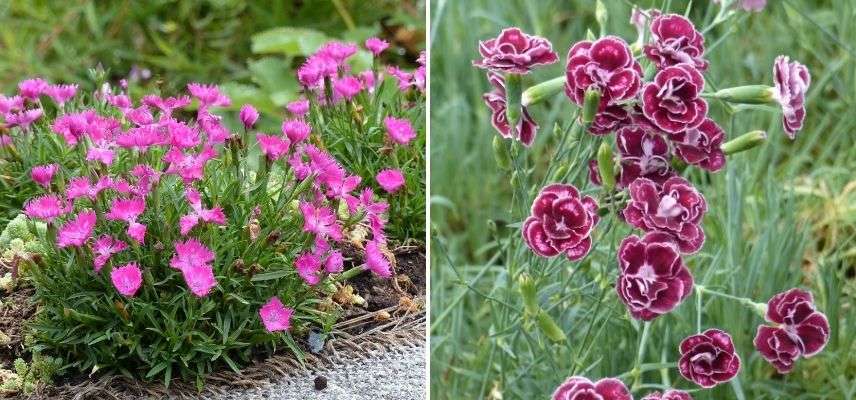
Dianthus gratianopolitanus ‘Kahori’ and Dianthus allwoodii ‘Romeo’
Read also
Dianthus: 6 ideas to pair in the gardenWhen and how to plant Carnations in pots?
Planting Period
Carnations can be potted all year round, except during frost and extreme heat. However, in hot and dry regions, it is preferable to plant in autumn before the first frosts, while in cold regions with harsh winters, wait until winter has passed to plant from April to May before the dry periods.
Planting
- Soak the root ball for a few minutes in a bucket of water to eliminate all air pockets. No bubbles should rise to the surface.
- Place a draining layer of clay balls or gravel at the bottom of the container.
- Cover with substrate and create a hole to accommodate your plant.
- Remove your Carnation from its pot and gently untangle the roots if they form a large clump.
- Position your root ball and fill the empty spaces with your soil.
- Firm down by hand and water generously.
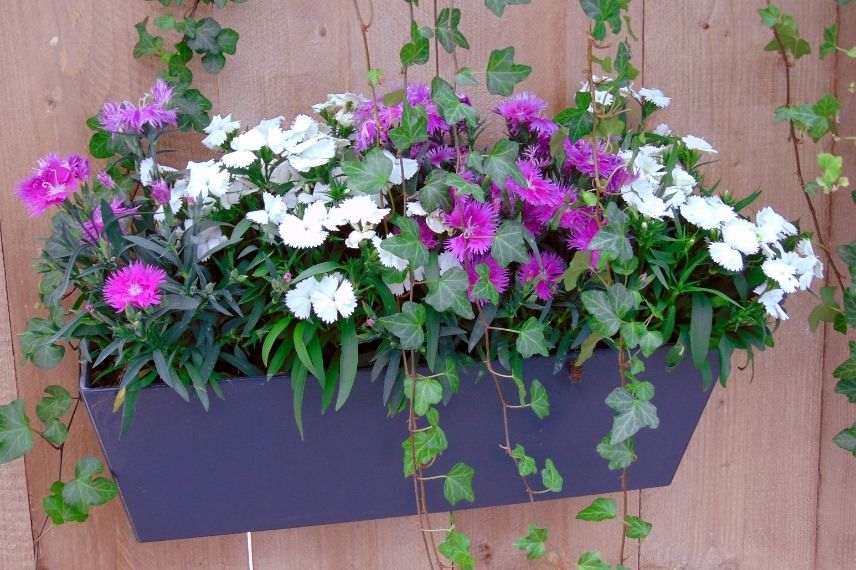
What exposure for the potted Carnation?
Dianthus thrives in sunny and airy locations where it grows better and produces more flowers. It can tolerate a slightly shaded situation, provided it receives sunlight for at least half of the day.
How to care for a Carnation in a pot?
Watering
Although the Carnation loves sun and warmth, pot watering must be regular after planting to aid the rooting of the plant. In open ground, it can withstand periods of drought, but not in pots. During summer, continue to water twice a week. And don’t forget to empty the saucer of your pot if water stagnates, especially in winter when watering can be spaced out.
Feeding
To bloom well, Dianthus need to be fertilised. Administer a liquid fertiliser for flowering plants from spring and every 20 days during flowering or an occasional guano-based fertiliser, according to the manufacturer’s recommended doses. Alternatively, a supply of well-decomposed compost is possible and equally effective.
Staking
Florist’s Carnations and large Sweet Williams need to be staked and straightened. To do this, gently encircle the entire clump of your Dianthus with small stakes (bamboo, plastic, wood, steel) to which you attach string or raffia, forming a sort of support cage.
Pruning
To encourage the production of new flowers, regularly cut back the flowering stems with pruning shears. The remontant varieties should be lightly cut back after summer flowering to encourage a resurgence of flowers in September. For perennial varieties, a simple cleaning of the clump can be done in autumn or late winter. As for annual Carnations, they can be pulled up in autumn, as their life cycle is complete.
Repotting
At the end of winter, in April, it is time to repot your Carnations into a larger pot (one size up) with a new nutrient-rich substrate.
Wintering
Very hardy, the Carnation withstands low temperatures down to -15°C, or even lower depending on the cultivar. However, potted plants on a terrace or balcony are more sensitive to cold than those in open ground. If you are in a region with harsh winters, winter the less hardy Dianthus before the onset of severe cold in a non-heated, bright location. If it is not possible to bring your pot indoors, protect it by moving it closer to a wall, wrapping the container with a winter fleece or bubble wrap, and elevating the pot with small blocks so that it does not come into direct contact with the cold ground. However, in the south of the Loire, your pot can remain outdoors.
Possible Diseases and Pests
With good resistance to diseases, Carnations can nevertheless be affected by various diseases such as rust, botrytis, and powdery mildew. To learn more, consult our sheets for natural and effective treatments:
Aphids, vine weevils, thrips, caterpillars, and carnation flies can also infest them. You can combat thrips and caterpillars with a pyrethrum-based treatment. Carnation flies will be repelled by spraying nettle manure every two weeks. Discover our tips for combating other carnation pests:
To go further
- Everything you need to know about Carnation: planting tips, maintenance, sowing
- All our tips for using pyrethrum in the garden
- Subscribe!
- Contents
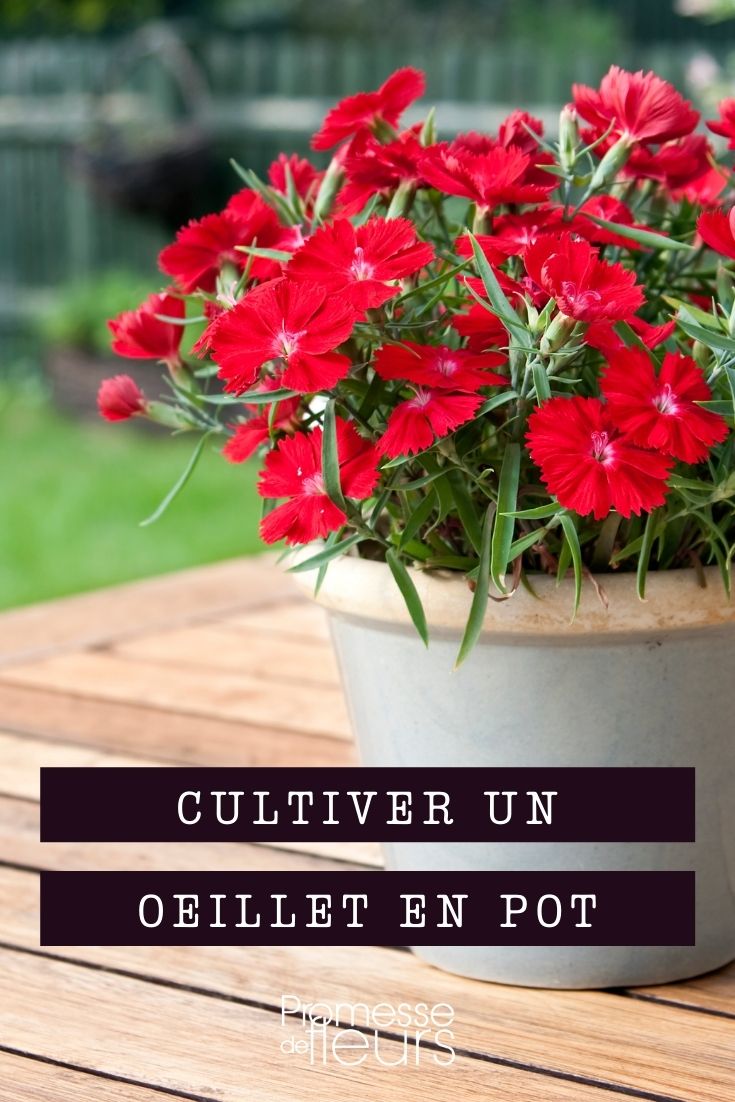































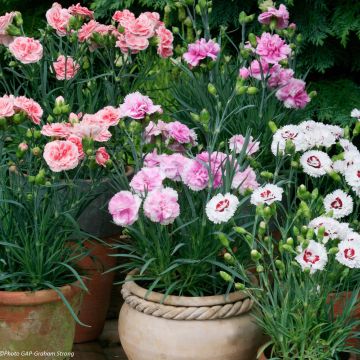
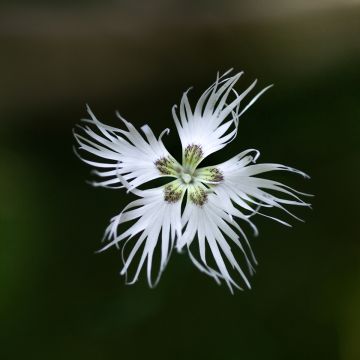
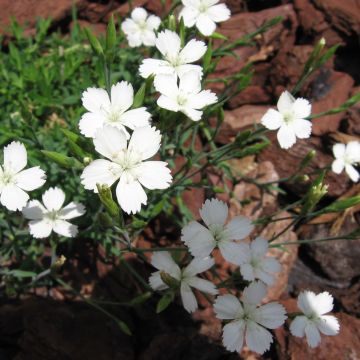
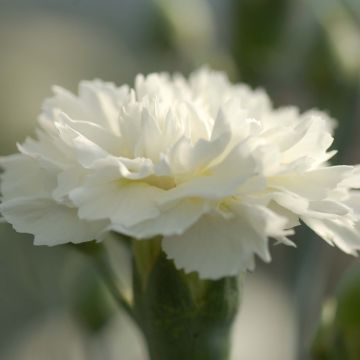
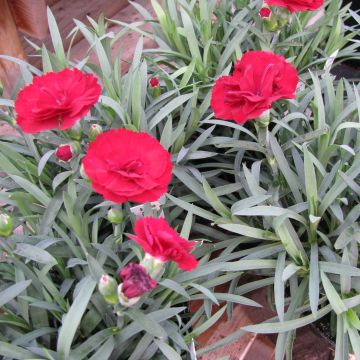
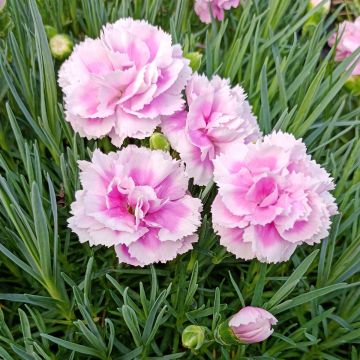
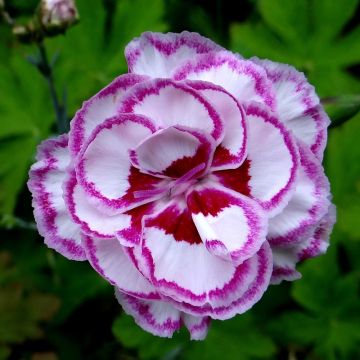
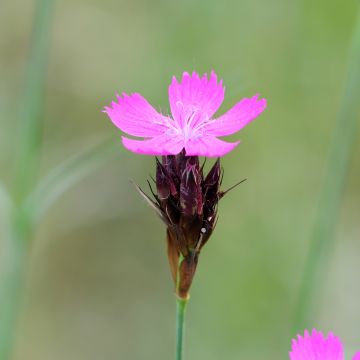
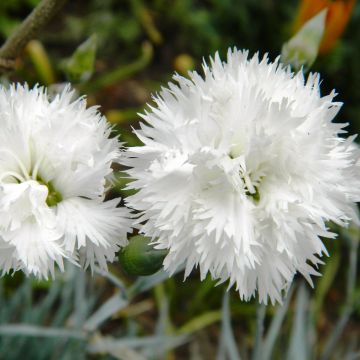
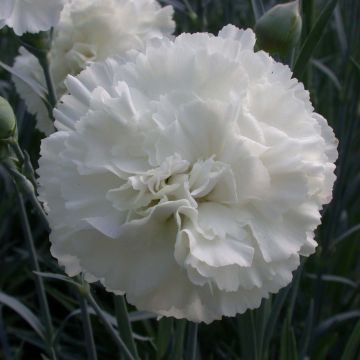
Comments